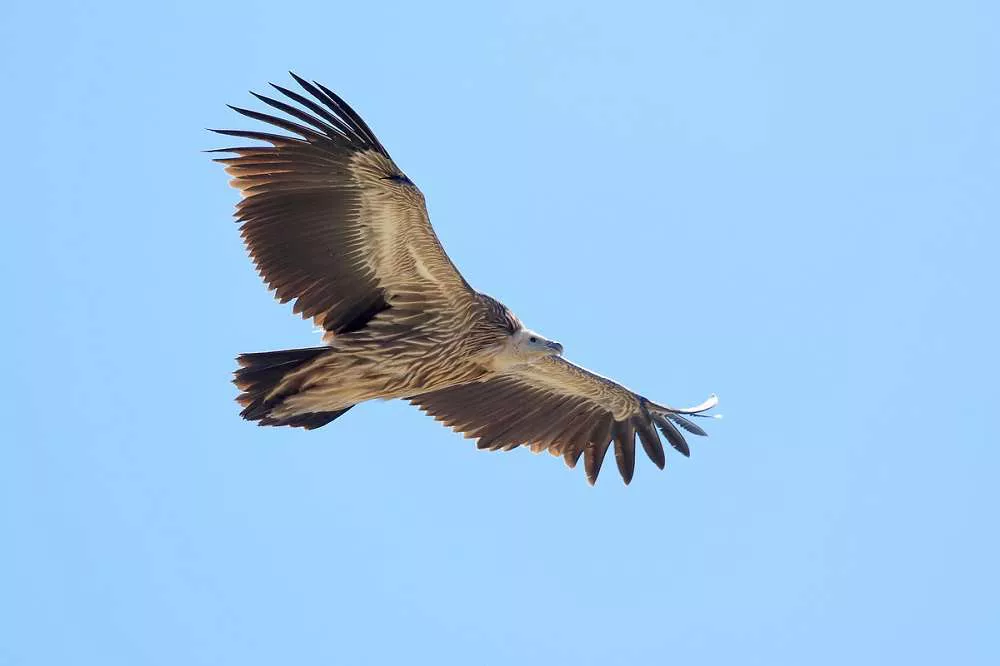The Himalayan vulture (Gyps himalayensis) is a large bird of prey that is found in the Himalayan region of South Asia. It is one of the largest vultures in the world and is an important scavenger in the ecosystem. In this article, we will explore the size of the Himalayan vulture in detail.
Physical Description
The Himalayan vulture is a large bird with a wingspan of around 2.6 meters (8.5 feet) and a body length of approximately 1.2 meters (4 feet). It has a powerful, heavy build with a broad wingspan and a short tail. Adult birds typically weigh between 6 and 10 kilograms (13 to 22 pounds). They have a bald head and neck, which is adapted for feeding on carrion without getting feathers dirty. The beak is long and sharp, and the eyes are small and set deep in the skull.
Males and females look similar, but females are slightly larger than males. Juvenile Himalayan vultures are dark brown in color with white streaks and spots on their feathers. As they mature, their feathers become lighter and more uniform in color, eventually turning into a pale cream or white.
Habitat
Himalayan vultures are found in the high mountains of the Himalayas, at elevations of up to 6,000 meters (20,000 feet). They prefer open areas such as cliffs, valleys, and high-altitude plateaus, and are also known to inhabit forested areas. They can be found in India, Nepal, Bhutan, and Pakistan.
Behavior
Himalayan vultures are primarily scavengers, feeding on the carcasses of dead animals. They have a keen sense of smell, which helps them locate carrion from great distances. They are known to form large groups at feeding sites, where they compete with other scavengers such as other vultures, eagles, and jackals.
Himalayan vultures are also known for their soaring ability, using thermal currents to fly long distances without flapping their wings. They are highly social birds and often roost in large flocks at night.
Conservation Status
The Himalayan vulture is listed as Critically Endangered by the International Union for Conservation of Nature (IUCN). The population has declined significantly in recent years, mainly due to the use of a non-steroidal anti-inflammatory drug (NSAID) called diclofenac. This drug is used to treat livestock, but when vultures consume the carcasses of animals treated with it, they suffer from kidney failure and die. Conservation efforts are underway to save the Himalayan vulture, including captive breeding programs and the use of alternative drugs to treat livestock.
Conclusion
The Himalayan vulture is a large bird of prey that plays an important role in the ecosystem as a scavenger. It has a powerful build, a broad wingspan, and a short tail. Adult birds typically weigh between 6 and 10 kilograms (13 to 22 pounds). Himalayan vultures are primarily found in the high mountains of the Himalayas, at elevations of up to 6,000 meters (20,000 feet). They are highly social birds and often roost in large flocks at night. Despite being a crucial part of the ecosystem, their populations are declining due to various threats, including the use of diclofenac. Conservation efforts are needed to ensure their survival.
Related topics:


 Facebook
Facebook  Instagram
Instagram  Youtube
Youtube 